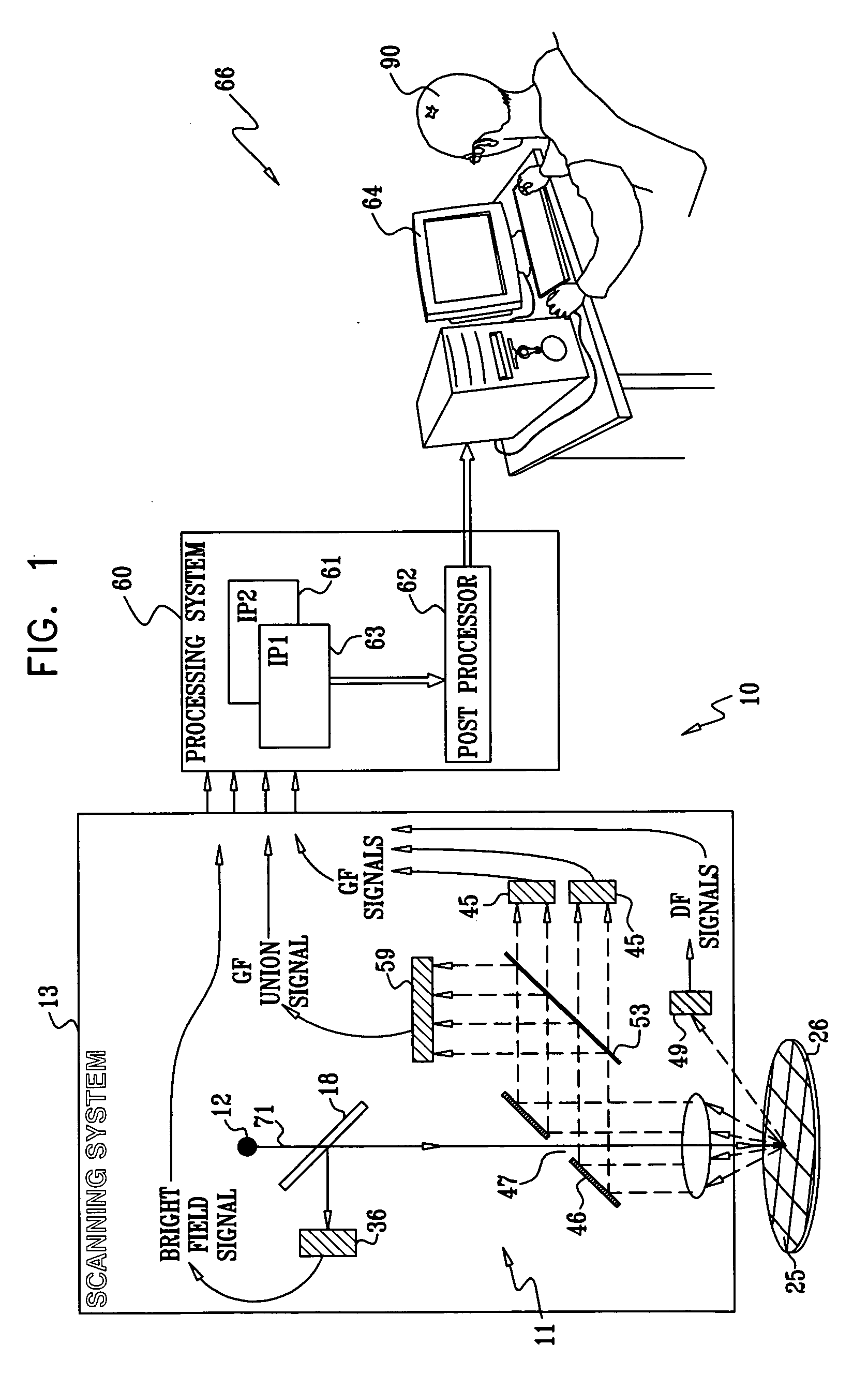Method for filtering nuisance defects
a technology of nuisance defects and filtering methods, applied in the field of detecting defects in fabricated wafers, can solve the problems of reducing die performance and performance reduction
- Summary
- Abstract
- Description
- Claims
- Application Information
AI Technical Summary
Benefits of technology
Problems solved by technology
Method used
Image
Examples
Embodiment Construction
[0021] Reference is now made to FIG. 1, which is a schematic illustration of a wafer inspection apparatus 10, according to an embodiment of the present invention. Apparatus 10 is used to inspect a surface 25 of a wafer 26, typically a semiconductor wafer, during one or more stages of fabrication of the wafer. Herein, by way of example, apparatus 10 is assumed to use an optical inspection scanning system 13, but those having ordinary skill in the art will be able, mutatis mutandis, to adapt the following description to accommodate other inspection systems or combinations of inspection systems. Such systems include, but are not limited to, inspection of wafer 26 by substantially any type of electromagnetic radiation and / or charged particle scanning.
[0022] Apparatus 10 comprises a source 12, typically a laser, which radiates an optical beam 71 onto surface 25. Reflected and / or scattered light that results from the irradiation is detected in a number of detectors 11. Herein detectors 1...
PUM
 Login to View More
Login to View More Abstract
Description
Claims
Application Information
 Login to View More
Login to View More - R&D
- Intellectual Property
- Life Sciences
- Materials
- Tech Scout
- Unparalleled Data Quality
- Higher Quality Content
- 60% Fewer Hallucinations
Browse by: Latest US Patents, China's latest patents, Technical Efficacy Thesaurus, Application Domain, Technology Topic, Popular Technical Reports.
© 2025 PatSnap. All rights reserved.Legal|Privacy policy|Modern Slavery Act Transparency Statement|Sitemap|About US| Contact US: help@patsnap.com



